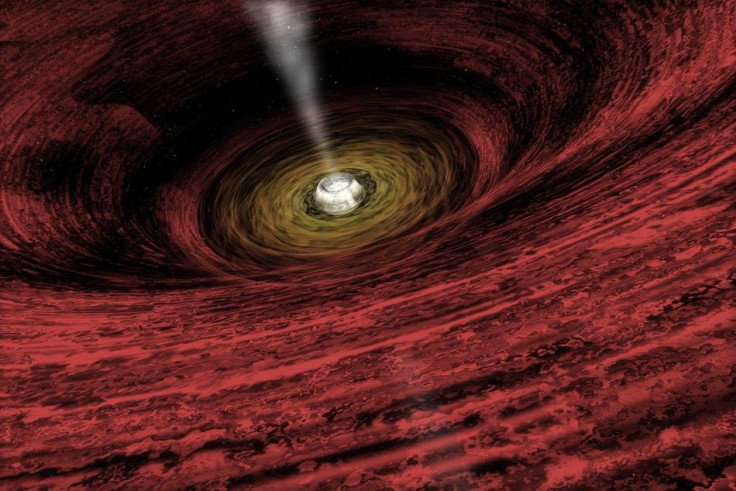Giant black hole gobbles star, sparks bright gamma ray flash

Powerful gamma ray flashes first detected by NASA in late March this year may have been the death rattle of a Sun-sized star falling into a previously dormant black hole and being ripped apart, astronomers reported on Thursday.
Two teams of researchers from the University of California in Berkeley and the University of Warwick in England have agreed that the flashing light seen through the NASA Swift satellite on March 28 was actually a black hole feeding on the unsuspecting star that got too close, according to a report posted online by the journal 'Science' on Thursday.
NASA's Swift satellite, which is trolling the universe for gamma ray bursts, detected the intensely bright flash in the constellation Draco. Astronomers initially thought it was a powerful burst of gamma rays from a collapsing star, one of the most powerful types of explosions in the universe, which usually die away within minutes.
But when the flash sustained for weeks although it faded in intensity, they realized that it wasn't a typical gamma-ray burst at all.
By using space-borne and ground-based telescopes, scientists finally established that the space explosions were brought about by the star sucked by the black hole, which produced high emissions of radiation that is seen on Earth as a stellar display.
Scientists said that the cosmic event is still visible as of this week, while the previously plotted black hole has been tagged as inactive prior to the event. Astronomers said its normal functions of swirling and scooping up objects within its path and sight could never be discounted.
The astronomers suspect that the gamma-ray emissions began on March 24 or 25, at a distance of about 3.8 billion light-years away from Earth.
“This is truly different from any explosive event we have seen before. This is truly different from any explosive event we have seen before,” said Joshua Bloom of the University of California-Berkeley, a co-author of research on the blast published in the journal Science, reported Reuters.
We have this otherwise dormant black hole, not gobbling up an appreciable amount of mass, and along comes this star which just happens to be on some orbit which puts it close to the black hole, Bloom said.
A black hole is a region of space from which nothing, not even light, can escape. The theory of general relativity predicts that a sufficiently compact mass will deform spacetime to form a black hole. There are two main types of black holes.
The first one is the black holes born from the death of stars, which are roughly a few times the mass of our sun. These stars end their lives when the hydrogen fuel that makes up the star's interior burns off, causing the star to collapse.
The second types are supermassive black holes, which range in mass from a few hundred thousand times the mass of our sun to a few billion times that mass, and exist at the center of galaxies. Most, and possibly all galaxies, including the Milky Way, are believed to contain supermassive black holes at their centers.
Must Read:
Newfound comet will make its closest pass by Earth in 2013, visible to naked eye
Half a million dollars for an idea to make Star Trek interstellar space travel a reality
© Copyright IBTimes 2024. All rights reserved.





















